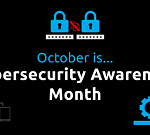
Providing wireless access gives your staff and guests greater freedom in the workplace. However, all of these mobile devices also present new security risks, and safeguarding your WiFi against cyber attackers has become a crucial part of protecting your IT infrastructure from intruders and data breaches.
Before we dig into the details of securing your organization’s WiFi, here are the previous blog entries/steps we’ve gone over in this series. Feel free to review them if you’re a new reader or if you’d like to refresh your memory of the first nine steps in the Stratosphere Networks guide to securing your IT infrastructure.
1. Performing a security audit
2. Creating and enforcing IT security policies
3. Updating your anti-virus solution
4. Updating workstations and servers
5. Guarding your email with a hosted spam solution
6. Implementing a hosted DNS solution
8. Implementing a backup solution
When you’re ready, here’s what you need to know about your next move to keep your infrastructure as safe as possible from cybersecurity threats: ensuring your WiFi is secure.
1. Use strong passwords. WiFi routers come with default usernames and passwords, according to the PCMag article “12 Ways to Secure Your Wi-Fi Network.” If you want to reduce the odds that intruders looking to gain access to sensitive data will be able to infiltrate your network, it’s important to change those credentials as soon as possible.
2. Choose your network name wisely. The name of your WiFi is called the service set identifier (SSID), and it’s what your network broadcasts so that users can find and connect to it. Just like you changed the default username and password for your network, you should also change the generic SSID, PCMag advises. Otherwise, you’ll give anyone looking to sneak onto your network a leg up by giving away which type of router you’re using, since generic names often include the manufacturer and model number.
You might want to take your preventive efforts a step further and stop publicly broadcasting your SSID altogether. But that could backfire, according to the PCWorld article “5 Wi-Fi security myths you must abandon now.”
Even if your router doesn’t broadcast its SSID, the name will still be included in data packets, probe requests and responses, and association and re-association requests, so anyone interested in figuring it out can still do so with little effort. Additionally, trying to hide the SSID could pique the interest of hackers, since it suggests you’re trying to protect important data, PCWorld states.
3. Update firmware on a regular basis. Over time, hackers will identify vulnerabilities in your router’s firmware that they can potentially exploit to gain access to sensitive data. As a result, it’s crucial to check your router on at least a monthly basis to see if it’s due for updates, according to PCMag.
4. Keep guest networks separate from your main network. While you might want to give your guests convenient access to your company’s WiFi, it’s important to consider whether you trust everyone who passes through enough to open up your network to them. Just as a precaution, it can help to set up a separate network for guests instead and reserve your main network for members of your organization.
There are only two steps left to get through in our process for making sure your IT infrastructure is secure. Be sure to check back with us next week for step 11. In the meantime, if you have any questions about WiFi security or IT security in general, our expert techs can help. Feel free to give us a call at 877-599-3999 or email sales@stratospherenetworks.com.


